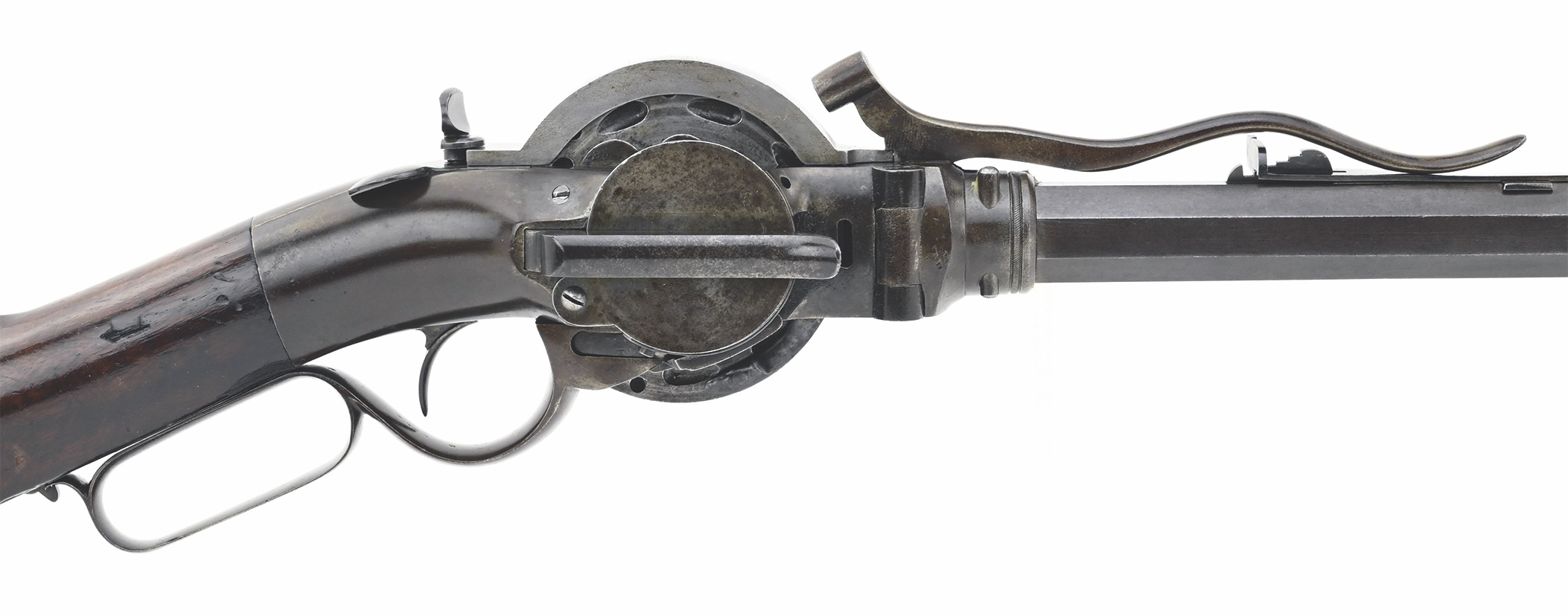The Porter turret rifle was one of those weapons that brimmed with ingenious features but was critically flawed. From the 1830s, several American firearms designers strove to develop effective repeating rifles that incorporated the new percussion system of ignition. Samuel Colt led the way by applying his revolver cylinder mechanism to rifles; other designers, largely to avoid infringement of Colt’s patent, went the “turret rifle” route. Here the multiple cylinders of the weapon were arranged in a rotating disk, radiating from a central hub like the spokes of a wheel. Patented in 1851 by Perry W. Porter, the Porter turret rifle featured a nine-shot turret, each cylinder loaded with powder and ball. The turret was rotated by an underlever, which indexed the cylinders to align with the barrel one shot at a time. The hammer, mounted on the side of the weapon, hit percussion caps rotated into place from a feed mechanism.

While the Porter turret rifle was a triumph of mechanical engineering, it was fundamentally dangerous to the user. Loose-powder revolver or turret weapons occasionally suffered a “chain fire” malfunction, when the flame of one shot flashed out and fired all the other cylinders simultaneously. On Porter’s gun, two of those cylinders at all times pointed directly at the user. (Colt pointed this out in his marketing, even suggesting that Porter had been killed by his own weapon—a complete fabrication.) Potential buyers were certainly wary: Only about 1,250 of the Porter rifles, in three patterns, were manufactured, and they saw limited use in the American Civil War. MHQ
Chris McNab is a military historian and author. His most recent book is A History of War: From Ancient Warfare to the Global Conflicts of the 21st Century (Arcturus Publishing, 2021).





